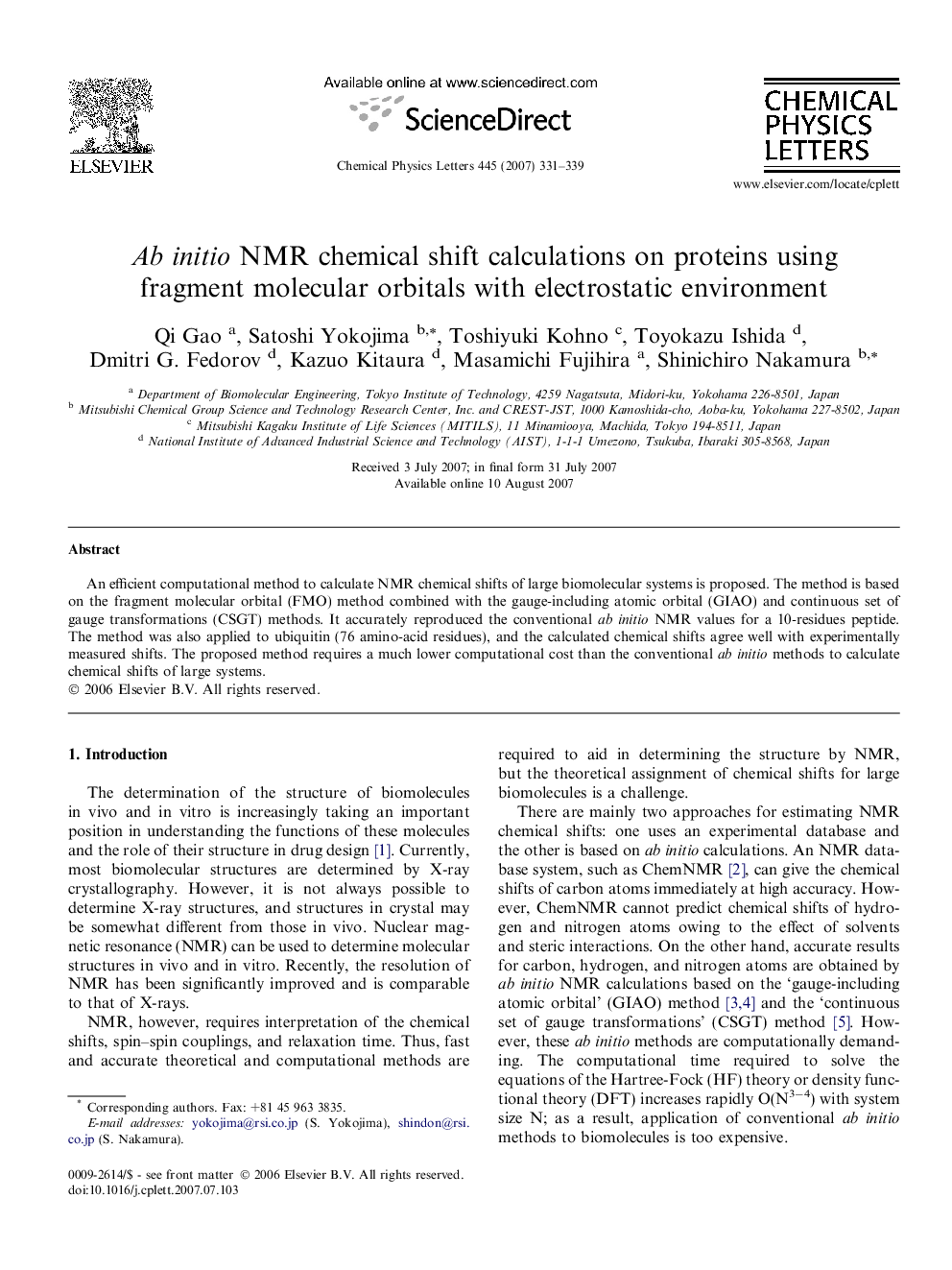| Article ID | Journal | Published Year | Pages | File Type |
|---|---|---|---|---|
| 5388743 | Chemical Physics Letters | 2007 | 9 Pages |
An efficient computational method to calculate NMR chemical shifts of large biomolecular systems is proposed. The method is based on the fragment molecular orbital (FMO) method combined with the gauge-including atomic orbital (GIAO) and continuous set of gauge transformations (CSGT) methods. It accurately reproduced the conventional ab initio NMR values for a 10-residues peptide. The method was also applied to ubiquitin (76 amino-acid residues), and the calculated chemical shifts agree well with experimentally measured shifts. The proposed method requires a much lower computational cost than the conventional ab initio methods to calculate chemical shifts of large systems.
Graphical abstractCorrelations between calculated absolute isotropic shielding constants of model 10-residue polypeptide (inset) obtained from FMO-based and conventional CSGT methods (6-31G(d)).Download full-size image
